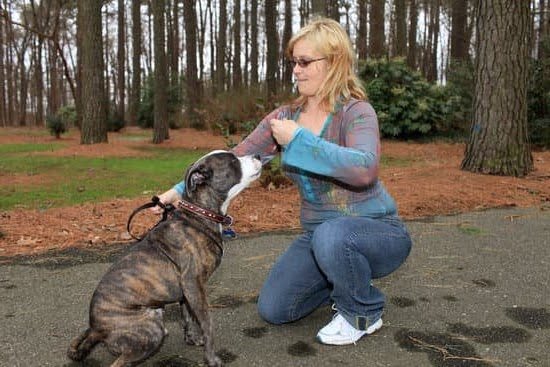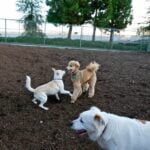Are you wondering how to train elder dogs? As our furry friends age, their needs and abilities change, requiring a different approach to training. In this article, we will explore the unique considerations and techniques for effectively training elder dogs. From assessing their health and physical limitations to addressing behavioral issues, we will provide practical tips for establishing a training routine that caters to the specific needs of older dogs.
As our canine companions grow older, they may experience changes in physical capabilities and behavior. Understanding these needs is crucial in providing them with proper care and training. In this section, we will discuss the importance of acknowledging the aging process in dogs and how it impacts their ability to learn and respond to training techniques.
We will also delve into the various factors that should be taken into account when training elder dogs, such as their health conditions, mobility issues, and cognitive changes. By gaining insight into the needs of elder dogs, we can tailor our training methods to accommodate their requirements and enhance their overall well-being.
Assessing the Health and Physical Limitations of Older Dogs
As our beloved dogs age, it is important to understand and assess their health and physical limitations in order to train them effectively and ensure their well-being. Elder dogs experience a range of health issues and physical changes that can impact their ability to learn and participate in training activities. By taking the time to assess these factors, we can adapt our training methods to suit their individual needs.
Understanding Health Issues
Older dogs are more prone to certain health conditions such as arthritis, hearing or vision loss, and cognitive decline. It is essential to have a thorough understanding of any health issues your senior dog may be experiencing in order to tailor their training program accordingly. Consult with your veterinarian to gain insight into your dog’s specific health concerns and how they may affect their ability to participate in training.
Evaluating Physical Limitations
In addition to health issues, older dogs may also experience physical limitations such as reduced mobility or stamina. Assessing your dog’s physical condition will help you determine the appropriate level of activity and training intensity for them. This may involve modifying exercises, using supportive equipment, or adjusting the duration and frequency of training sessions.
By understanding the health and physical limitations of our elder dogs, we can make informed decisions about how to train them effectively while prioritizing their comfort and well-being. Understanding these factors allows us to create a tailored training routine that considers their unique needs, ultimately contributing to a positive training experience for both dog and owner.
Establishing a Training Routine for Elder Dogs
As dogs age, their physical and mental abilities may change, making it important to establish a training routine that takes into account their specific needs. Here are some tips on how to train elder dogs:
1. Schedule regular training sessions: Elder dogs may not have the same stamina and energy as younger dogs, so it’s important to keep training sessions short and frequent. Aim for multiple short sessions throughout the day rather than one long session.
2. Use clear and consistent cues: Older dogs may experience some cognitive decline, so it’s important to use clear and consistent cues during training. Use verbal commands along with hand signals to reinforce the desired behavior.
3. Incorporate gentle physical exercises: Physical exercise is important for maintaining an older dog’s mobility and overall health. Incorporate gentle exercises such as walking, stretching, or low-impact activities into their training routine.
4. Be patient and understanding: Elder dogs may take longer to learn new behaviors or commands, so it’s important to be patient and understanding during the training process. Avoid getting frustrated if they don’t respond immediately and instead focus on creating a positive and supportive environment for learning.
It’s essential to tailor your training approach based on your older dog’s individual needs and capabilities. By incorporating these tips into your routine, you can create a positive and effective training experience for your elder dog while maintaining their physical and mental well-being.
Using Positive Reinforcement Techniques for Training Older Dogs
As dogs age, their physical and mental abilities may change, requiring adjustments in how they are trained. Training elder dogs can be a rewarding experience, but it requires patience and understanding of their limitations. Positive reinforcement techniques are essential when training older dogs, as they respond well to rewards and praise.
When using positive reinforcement techniques for training older dogs, it’s important to understand their specific needs and make adjustments accordingly. Elder dogs may have limited mobility or suffer from arthritis and joint pain, so it’s crucial to choose training exercises that are gentle on their bodies. Additionally, older dogs may experience cognitive decline, so simple commands and shorter training sessions may be more effective.
One effective way to train elder dogs using positive reinforcement is through the use of treats. Rewarding good behavior with small treats can motivate them to learn new commands and tricks. It’s important to choose high-quality treats that are easy on their digestive systems and low in calories, especially if they are less active than younger dogs.
It’s also important to keep training sessions short and enjoyable for elder dogs. Older dogs may become easily fatigued, so keeping sessions brief can help prevent them from becoming overwhelmed or disinterested. By using gentle methods and being patient with their progress, older dogs can continue learning new skills and behaviors well into their senior years.
| Training Method | Description |
|---|---|
| Treat-based Training | Rewarding good behavior with small treats to motivate learning |
| Gentle Training Exercises | Choosing gentle exercises that are easy on their bodies and joints |
| Short Sessions | Keeping training sessions brief to prevent fatigue and maintain interest |
Addressing Behavioral Issues in Older Dogs
As dogs age, they may start to exhibit certain behavioral issues that can be challenging for both them and their owners. Addressing these issues in older dogs requires patience, understanding, and a tailored training approach. Here are some tips on how to train elder dogs and address their behavioral issues:
- Understand the root cause of the behavior: Before attempting to address any behavioral issue in an older dog, it’s important to understand the underlying cause. Whether it’s anxiety, fear, or cognitive decline, knowing the root cause will help you tailor your training approach accordingly.
- Implement positive reinforcement techniques: Just like with any dog training, positive reinforcement is key when addressing behavioral issues in older dogs. Rewarding good behavior with treats, praise, or affection can help them learn new behaviors and reduce unwanted ones.
- Be patient and consistent: Training elder dogs with behavioral issues may take longer than training younger dogs. It’s important to be patient and consistent in your training efforts. Set realistic expectations and celebrate small victories along the way.
In addition to these general tips for addressing behavioral issues in older dogs, it’s also important to consider adaptations to training methods for senior dogs. This may include lower-impact exercises, shorter training sessions, and using more visual cues rather than relying solely on verbal commands. By understanding the unique needs of elder dogs and adjusting your training approach accordingly, you can effectively address their behavioral issues while maintaining their physical and emotional well-being.
Adaptations to Training Methods for Senior Dogs
As dogs age, they may experience physical and cognitive changes that can impact their ability to learn and respond to training. When adapting training methods for senior dogs, it’s important to take into consideration any health conditions, mobility issues, and sensory impairments they may have.
One key adaptation is to adjust the intensity and duration of training sessions. Older dogs may not have the same endurance as younger dogs, so it’s important to keep training sessions shorter and allow for plenty of rest periods. This will help prevent overexertion and reduce the risk of injury.
Another adaptation is to use more visual and tactile cues during training. Since older dogs may experience hearing or vision loss, using hand signals or physical prompts can help them understand commands more effectively. Additionally, incorporating more repetition and consistency in training can help compensate for any cognitive decline in senior dogs.
It’s also essential to create a comfortable and safe environment for training elder dogs. This may include providing non-slip surfaces, using gentle handling techniques, and avoiding high-impact activities that could be hard on their joints. By making these adaptations, trainers can ensure that senior dogs can continue learning and engaging in obedience training in a way that is safe and beneficial for their overall well-being.
| Adaptation | Description |
|---|---|
| Adjusting Training Intensity | Keep sessions shorter and allow for rest periods to prevent overexertion. |
| Visual and Tactile Cues | Incorporate hand signals or physical prompts due to potential hearing or vision loss. |
| Comfortable Environment | Provide non-slip surfaces, gentle handling techniques, and avoid high-impact activities. |
Special Considerations for Obedience Training in Elder Dogs
As dogs age, they may experience physical and cognitive changes that can make obedience training more challenging. However, it is still possible to train elder dogs effectively with the right approach and understanding of their needs. Here are some special considerations for obedience training in elder dogs that can help you navigate this process with patience and success.
Understanding Physical Limitations
Before starting obedience training with an older dog, it’s essential to assess any physical limitations they may have. Arthritis, muscle stiffness, and reduced mobility are common issues in senior dogs that can impact their ability to perform certain commands or activities. Understanding these limitations will guide you in adapting your training methods to accommodate their needs and prevent unnecessary strain or discomfort.
Patience and Consistency
Obedience training for elder dogs requires an extra dose of patience and consistency. It may take longer for them to understand and execute commands, so it’s important not to rush the process or become frustrated. Repetition and gentle encouragement are key components of successful training for senior dogs. Consistently using the same cues and rewarding positive behavior will help them learn at their own pace while maintaining their confidence.
Adapting Training Methods
When training elder dogs, it’s crucial to adapt your methods to their individual abilities and learning style. This may involve using visual or tactile cues instead of relying solely on verbal commands, incorporating shorter training sessions with plenty of breaks, or adjusting the intensity of physical activities based on their comfort level. By tailoring your approach to fit the specific needs of each older dog, you can create a positive and supportive environment for effective obedience training.
By considering these special considerations for obedience training in elder dogs, you can approach the process with empathy and understanding. With patience, consistency, and adapted methods, older dogs can continue to learn new skills and behaviors that enhance their quality of life while strengthening the bond between pet and owner.
Tips for Maintaining Consistency and Patience in Training Elder Dogs
In conclusion, training elder dogs requires a thoughtful approach that takes into account their specific needs and limitations. As our beloved canine companions age, they may experience physical and cognitive changes that can impact their ability to learn and follow commands. By understanding these unique challenges, pet owners can effectively train and support their older dogs in a way that promotes their overall well-being.
Assessing the health and physical limitations of older dogs is crucial when developing a training routine. It’s important to tailor exercises and commands to accommodate any arthritis, vision or hearing impairments, or other age-related issues. Understanding these limitations will help pet owners establish a realistic and achievable training plan for their senior dogs.
Using positive reinforcement techniques is particularly beneficial for training older dogs, as this method emphasizes rewards and encouragement rather than punishment. Incorporating rewards such as treats or praise can motivate elder dogs to engage in learning despite potential physical limitations or behavioral challenges. Additionally, addressing any behavioral issues in older dogs with patience and understanding is essential for successful training outcomes.
By making adaptations to training methods tailored to the unique needs of senior dogs, pet owners can support their aging companions in maintaining mental stimulation and a sense of purpose. Overall, consistency, patience, and adaptability are vital components when considering how to train elder dogs effectively.
Frequently Asked Questions
Can Older Dogs Still Be Trained?
Yes, older dogs can definitely still be trained. While it may take a bit more patience and consistency, they are capable of learning new commands and behaviors.
What Age Is Too Late to Train a Dog?
There isn’t really a specific age that is “too late” to train a dog. It ultimately depends on the individual dog and their cognitive abilities. Generally, older dogs may take longer to learn but can still benefit from training.
How Do You Train an Older Dog Basic Commands?
When training an older dog basic commands, it’s important to use positive reinforcement, patience, and consistency. Start with simple commands like sit, stay, and come, and gradually progress to more advanced ones. Remember to work at the dog’s pace.

Welcome to the blog! I am a professional dog trainer and have been working with dogs for many years. In this blog, I will be discussing various topics related to dog training, including tips, tricks, and advice. I hope you find this information helpful and informative. Thanks for reading!





